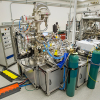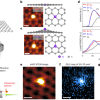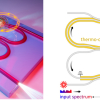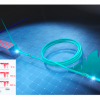For years, melanoma researchers have studied samples that were considered uniform in size and colour, making them easier to examine by more conventional means. But melanomas are often irregular and dark, making them difficult to investigate. Researchers at the University of Missouri have devised a new technique to detect and analyse single melanoma cells that are more representative of the skin cancers developed by most patients. The study, recently reported in the Analyst, outlines the new techniques that could lead to better and faster diagnoses.
“Researchers often seek out the types of cancerous cells that are homogenous in nature and are easier to observe with traditional microscopic devices”, said Luis Polo-Parada. “Yet, because the vast amount of research is conducted on one type of cell, it often can lead to misdiagnosis in a clinical setting.”
The research team decided to supplement photoacoustic (PA) spectroscopy. They modified a microscope that was able to merge light sources at a range conducive to observing the details of single melanoma cells. Using the modified system, human melanoma and breast cancers as well as mouse melanoma cells were diagnosed with greater ease and efficiency. The team also noted that as the cancer cells divided, they grew paler in colour but the system was able to detect these newer, smaller cells as well.
“Overall, our studies show that by using modified techniques we will be able to observe non-uniform cancer cells, regardless of their origin”, Polo-Parada said. “Additionally, as these melanoma cells divide and distribute themselves throughout the blood, they can cause melanomas to metastasise. We were able to observe those cancers as well. This method could help medical doctors and pathologists to detect cancers as they spread, becoming one of the tools in the fight against this fatal disease.”
Credit: MU News Bureau
















